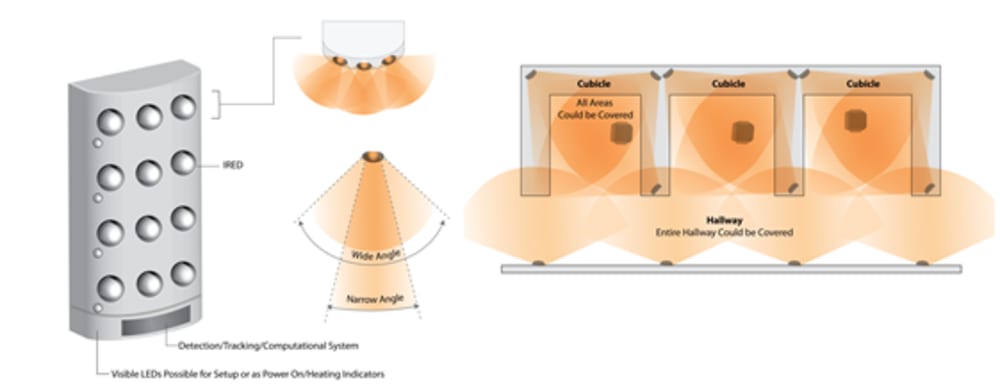Radiant heating options in buildings (mainly in floors and ceilings) have been available for many years but have seen limited market penetration, though radiant floors are currently popular in some high-end new homes. Radiant heating can increase a buildings mean radiant temperature (MRT) and allow a reduced thermostat setting, but the efficiency is limited by the fact that the heated surfaces radiate to other room surfaces. Typically radiant heating is not suitable for retrofits to existing buildings due to high costs. High-intensity infrared (IR) heating is used in industrial settings (especially in buildings with high air exchange rates) and outdoors at cafes, etc.
The original discovery and development of LED technology was related to infrared emissions, and infrared LEDs are still frequently used as transmitting elements in remote-control circuits, such as those in remote controls for a wide variety of consumer electronics. Higher-powered IR LEDs are used for illumination: for surveillance, machine vision, 3D gaming, etc. Costs, power, and efficiency of devices are still evolving.
We propose developing targetable beam IR heating of building occupants by controlling multiple arrays of high-power infrared-LEDs (IRED) based on detection of occupant location. The system would provide 18 W of heating at a system COP of 0.56, meeting or exceeding ARPA-E targets.
The impact of this new system would be to revolutionize personal heating systems. The basic IRED array with tracking system is modular and could be used almost anywhere. The primary application will be for office situations such as cubicles, however, the technology could also be used in residential and industrial settings. They could be installed in much the same way as lamps are in homes or offices. Individuals perceive an area as too dark so they install a lamp. Here they would perceive an area is too cold, plug in the IRED heating system with integrated tracking system and have instant, personal comfort. There could be multiple power settings, larger or smaller power arrays could be used, similar to different power lamps. Multiple arrays could be installed in a room, again similar to lamps. There are many outdoor uses as well such as camping or sporting events.
The system will consist of multiple arrays of IREDs that will be controlled via a low cost tracking system. As part of this development effort, different configurations of the arrays will be investigated. This could include stand-alone applications or incorporating them with existing or new products such as computer monitors or lighting systems. Arrays could also be mounted on the underside of work surfaces of desks, conference room tables, dining tables, and coffee tables.
Like this entry?
-
About the Entrant
- Name:Chuck Booten
- Type of entry:individual
- Patent status:pending

